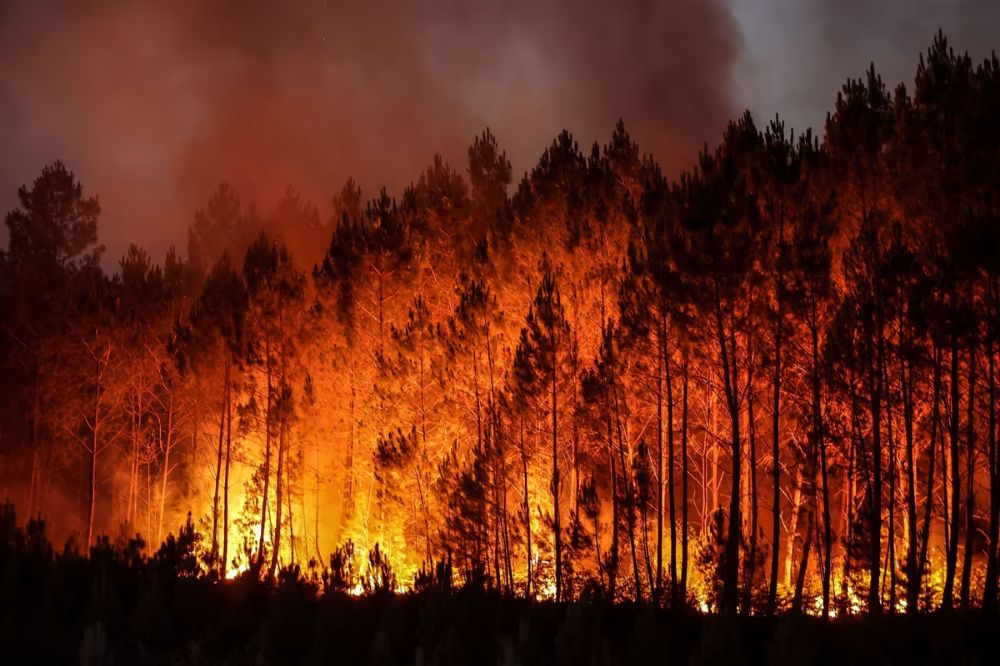Grand Canyon Lodge North Rim Wildfire: The Grand Canyon, one of the world’s most breathtaking natural wonders, has been struck by tragedy. On July 13, 2025, a fast-moving wildfire, known as the Dragon Bravo Fire, tore through the North Rim of Grand Canyon National Park, destroying the historic Grand Canyon Lodge and dozens of other structures. As someone who’s always been in awe of the canyon’s beauty, hearing this news felt like a punch to the gut. The lodge, a cherished landmark since 1928, was more than just a building—it was a gateway to the serene, less-traveled North Rim. Here’s a look at what happened, the impact, and what lies ahead.
Table of Contents
A Historic Treasure Lost to Flames
The Grand Canyon Lodge, the only lodging inside the park on the North Rim, was a rustic icon designed by architect Gilbert Stanley Underwood. Rebuilt in 1937 after a fire in 1932, it featured a stunning limestone façade, ponderosa pine beams, and a “Sun Room” with panoramic canyon views that left visitors speechless. For many, stepping into the lodge felt like stepping back in time, with its cozy saloon, deli, and gift shop creating a warm, welcoming vibe. Sadly, the Dragon Bravo Fire, sparked by lightning on July 4, consumed the lodge and 50 to 80 other structures, including historic cabins, a visitor center, a gas station, and employee housing. The fire’s rapid spread, fueled by extreme heat, low humidity, and winds gusting up to 40 mph, left firefighters powerless to save these cherished buildings.
The Dragon Bravo Fire’s Rampage
The Dragon Bravo Fire, one of two wildfires burning near the North Rim (the other being the White Sage Fire), scorched over 5,000 acres by July 13. What started as a manageable blaze exploded into chaos on July 12, expanding by 500 acres overnight due to volatile fire behavior. Efforts to contain it were hampered when a water treatment facility caught fire, releasing toxic chlorine gas that forced firefighters and hikers to evacuate. This gas, heavier than air, posed a serious health risk as it settled into the canyon’s lower elevations, halting aerial fire-retardant drops. The National Park Service (NPS) reported no injuries, but the loss of infrastructure has been devastating. The North Rim, which hosts about 10% of the park’s nearly five million annual visitors, is now closed for the 2025 season.
Heartbreak for Visitors and Locals
The destruction of the Grand Canyon Lodge has hit hard. For visitors like Tim Allen from Flagstaff, Arizona, the North Rim was a peaceful escape from the bustling South Rim, offering a sense of solitude and connection to nature. Social media posts reflect the grief of those who stayed at the lodge, with one Instagram post by the NPS gaining nearly 5,000 likes as people shared memories of its charm. Arizona Governor Katie Hobbs called the loss “incredibly saddening,” noting the lodge’s significance to Arizonans and global visitors. The fire also threatens cultural treasures, like the 600-pound “Brighty the Burro” statue in the lodge’s lobby, whose fate remains uncertain. For the tight-knit community of workers—college students, retirees, and adventurers—who called the North Rim home each summer, the loss feels deeply personal.
What’s Next for the North Rim?
With the North Rim closed for the season, the focus now shifts to recovery and rebuilding. The NPS and fire crews are still battling the Dragon Bravo and White Sage fires, both at 0% containment, while monitoring air quality and urging hikers to avoid the inner canyon. Early discussions about rebuilding the lodge emphasize honoring its original design while incorporating wildfire-resistant materials and sustainable practices. This tragedy has also sparked calls for better wildfire resilience, with Representative Greg Stanton urging federal and state investment to prevent future losses. For now, the South Rim remains open, but the North Rim’s closure and the lodge’s destruction mark a somber moment for this iconic destination.
The Grand Canyon Lodge’s loss is a reminder of nature’s power and fragility. As we mourn this historic gem, the hope is that the North Rim will rise again, blending its storied past with a resilient future.
